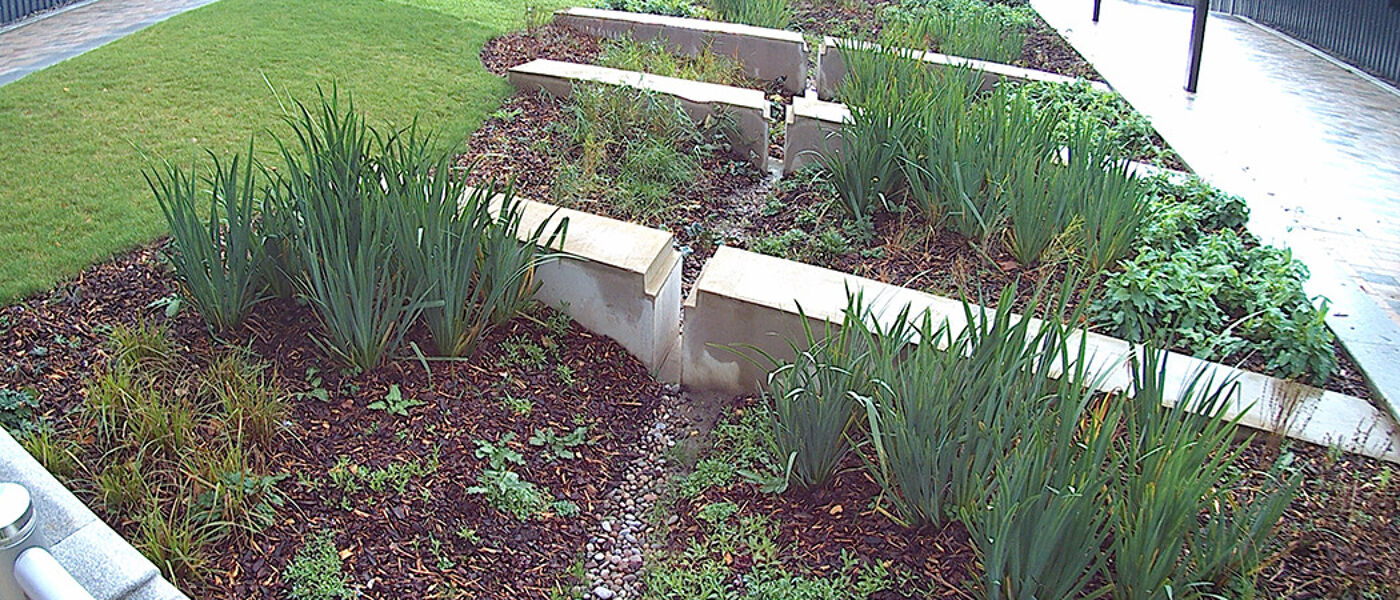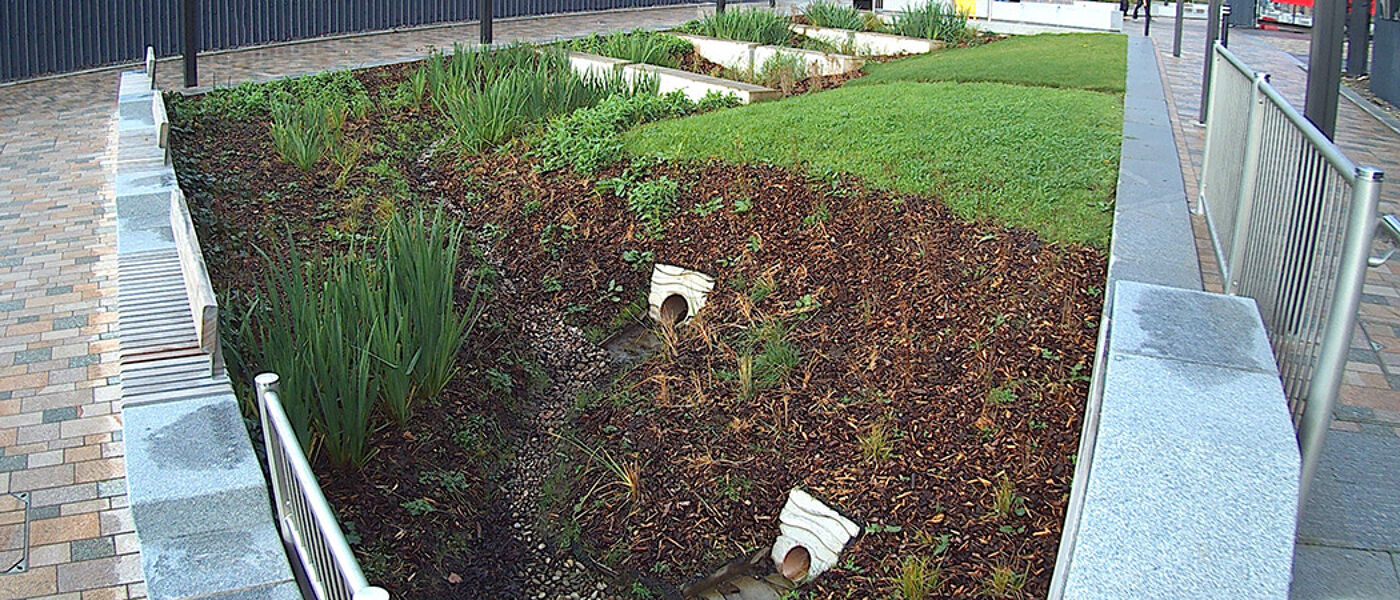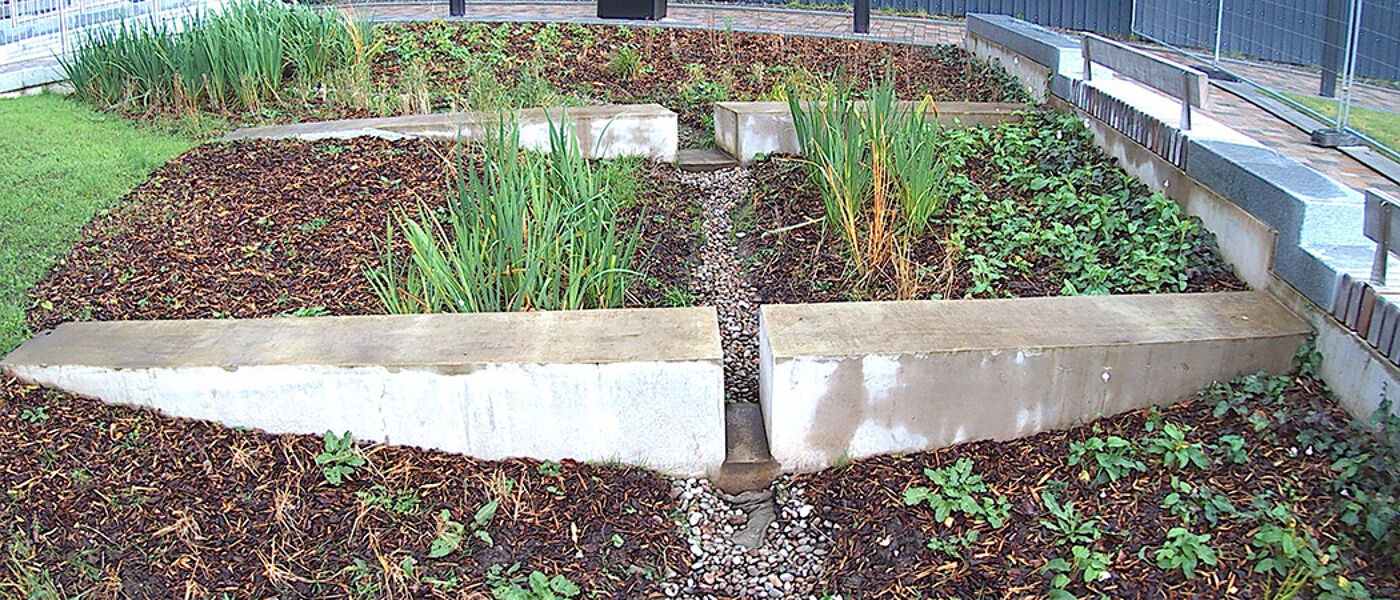Sustainable drainage
The University has planted landscapes with sustainability in mind

All the plants selected for UoG are hardy trees and shrubs capable of surviving in an urban environment where air quality, urban heating and rapid ( and potentially polluted) runoff from hardstandings are issues . The trees selected include hardy exotics and naturalised trees capable of withstanding a range of weather conditions ( eg Acers, Platanus and prunus). Plants for the rain gardens ( trees and herbaceous ) have been selected to withstand both waterlogging and periods of drier conditions. Plants selected also avoid those susceptible to diseases which have increased/ spread as a result of climate change

The rain gardens on University Place, planting beds in St Mungo Square and the main Rain Gardens below the square are designed to catch and attenuate surface water runoff ( carrying pollutants such as salt, hydrocarbons from asphalt and any spilt materials) The planting includes species capable of cleaning surface water runoff ( eg reeds/ rushes and marginals ) and the check dams within the rain gardens slow the rate at which surface water passes through the planting enabling the settlement of pollutants and silt within the beds

The UoG Public realm works are by necessity predominantly hard landscape to accommodate people and traffic movements , consequently majority of the soft landscape introduced in the UoG public realm is limited in extent and serves mostly for amenity + SuDs . This limits the opportunities for biodiversity enhancements but nevertheless the new public realm includes new areas of wildflower/ meadow grass, native planting and ornamental planting with benefits for pollinators.

